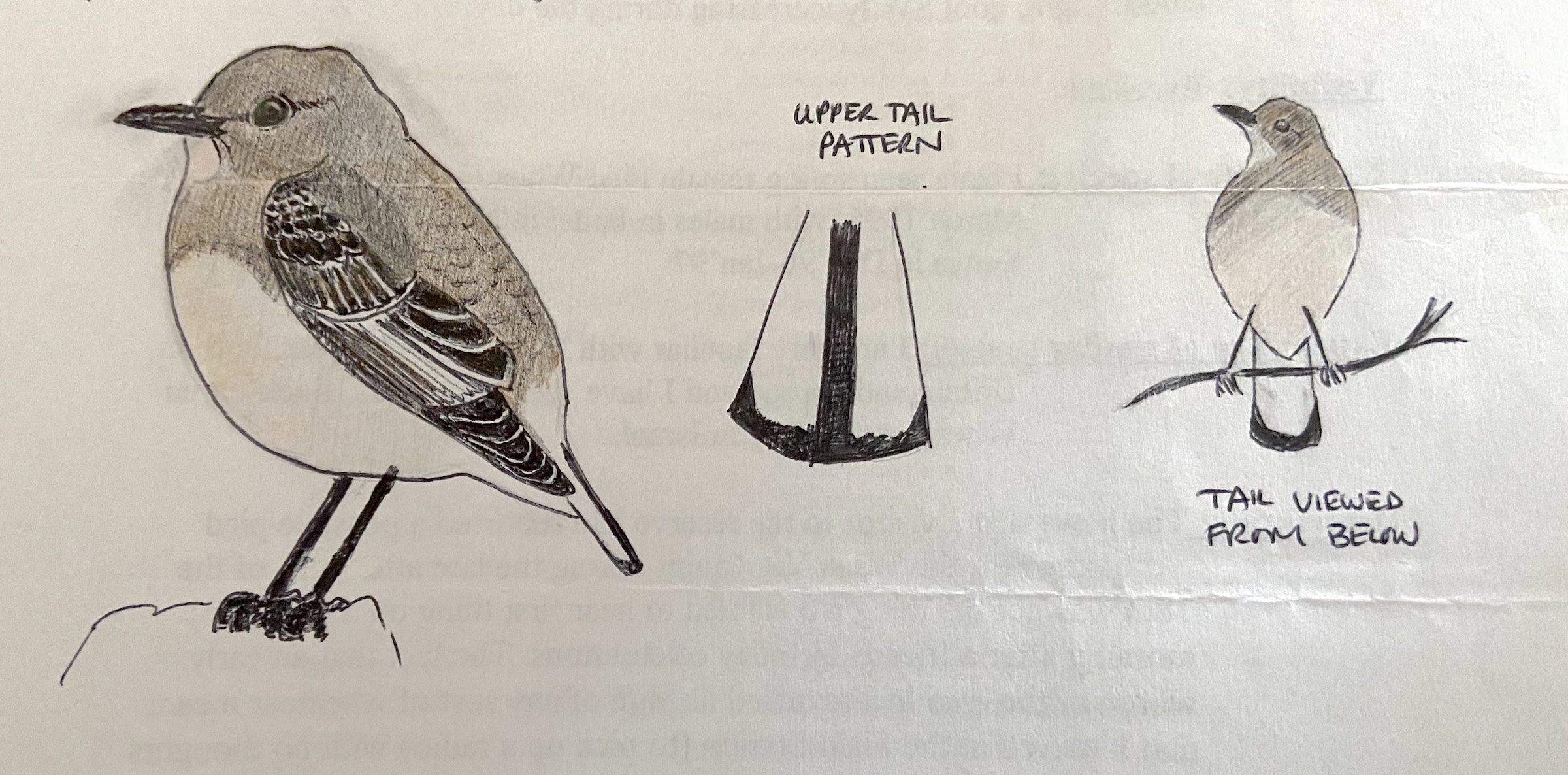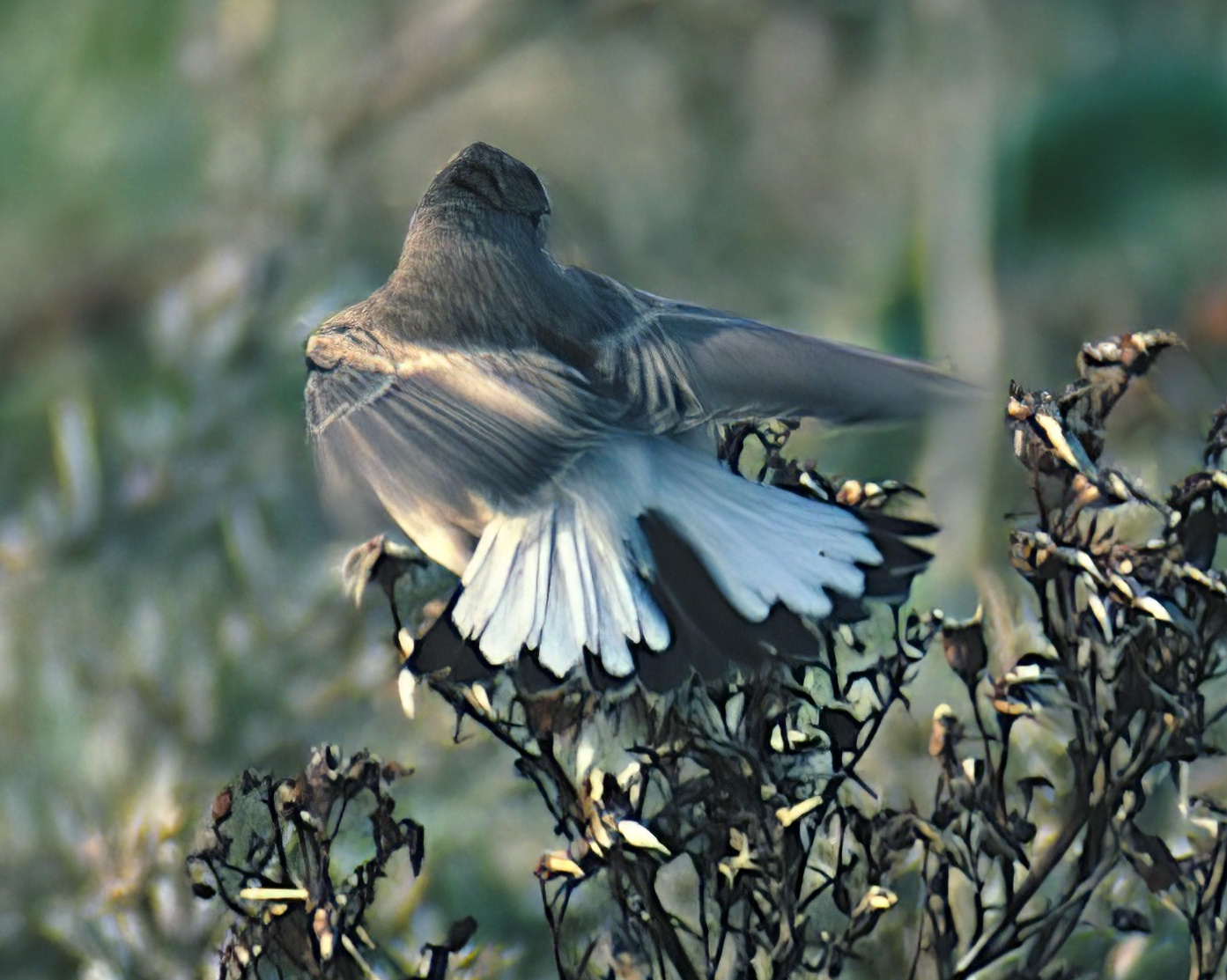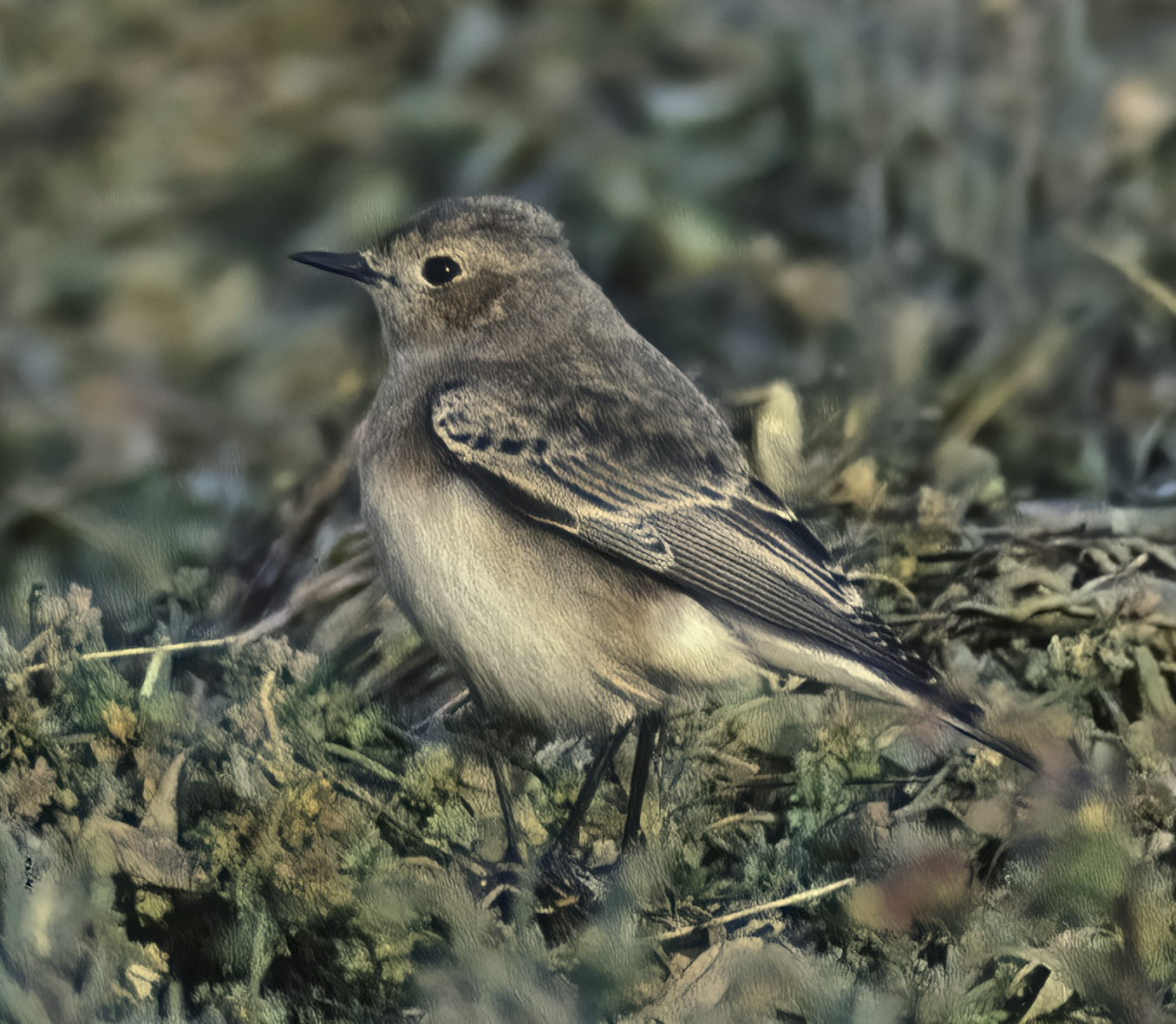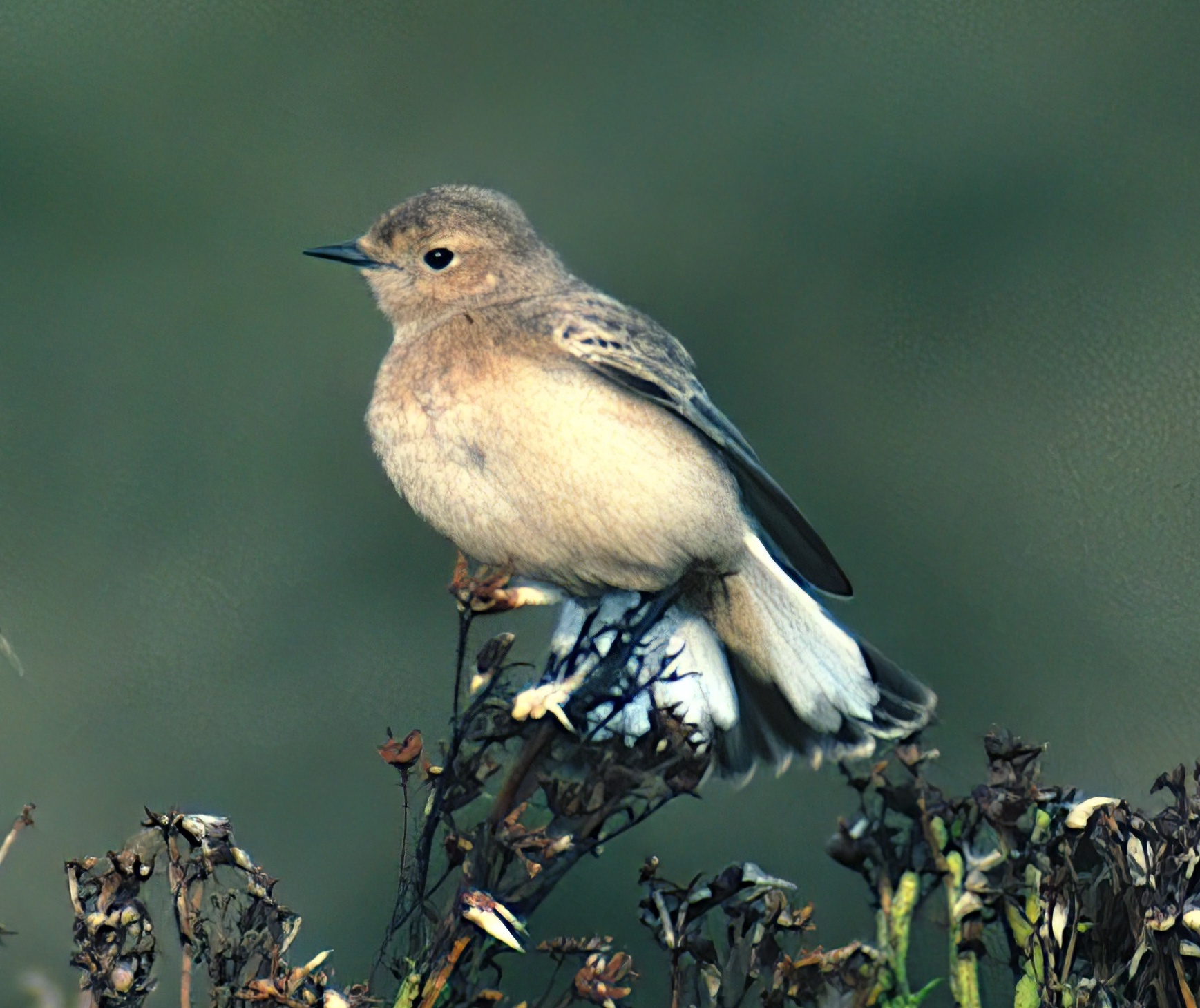Pied Wheatear Oenanthe pleschanka
A 1CY female at Gibraltar Point NNR Nov 18-26th, 2000 is the only county record to date. Described at the time as a small, dingy, rather uniform coloured wheatear with generally cold-toned grey-brown upperparts and a rather bland facial expression, it fitted the description of most Pied Wheatears which have turned up in Britain in late autumn. Slightly later than most previous British records, it arrived during an exceptional period for eastern rarities, which included nine Hume’s Warblers Phylloscopus humei and two Isabelline Shrikes Lanius isabellinus.
There have been 84 British records, 1950-2019, averaging about 2-3 birds per year. The last record in Nov 2019 came unexpectedly from Worcestershire. Overall Norfolk has recorded most (12), followed by Shetland (11) and Yorkshire (8).
| Site | First date | Last date | Count | Notes |
| Gibraltar Point NNR | 18/11/2000 | 26/11/2000 | 1 | 1CY female |
Finder’s report: Pied Wheatear at Gibraltar Point NNR, November 18th, 2000, first county record.
by K. M. Wilson
Note: this account is based on the article in the Lincolnshire Rare & Scarce Bird Report 2000-2002. This was one of two records in 2000 bringing the British total to 41 since 1950. This bird arrived during an exceptional late November for late eastern rarities which included an Olive-backed Pipit (November 8th), Pallas’s Warbler just north of the reserve (10th), Richard’s Pipit (21st) and Barred Warbler (27th).
Circumstances
KMW was told that a visitor had reported a wheatear, possibly Pied, near the Wash Viewpoint, on November 18th. No other confirmation was available and there was a little scepticism, but I (KMW) immediately side-tracked from livestock checking duties and also relayed the message to Gordon Allison (GA) who went to check it out. Shortly afterwards GA radioed to say, ‘I’ve got the wheatear, I think you ought to have a look at it!’. Ten minutes later I was on the scene and saw the wheatear feeding along the rocks at the dune edge. Initial impressions were of a small dingy, rather uniform wheatear with a bland expression, generally cold tones to the head, mantle and breast, a pale-centred throat and quite broad pale edgings to all wing feather tracts giving the wings a scaly effect. It flew briefly giving a glimpse of the reduced black in the tail feathers. I made about 10 phone calls in as many minutes to broadcast the news.
Gordon and I were confident that Black-eared Wheatear could largely be ruled out on general plumage tones and the extensive pale edgings to the wing feathers. If we were wrong, we figured visiting birders wouldn’t be disappointed. Later consultation of identification papers confirmed our thoughts and indicated that the bird was a 1st CY/ juvenile female. Also, later during the day, we received information that the original finder of the bird was a Mr. S. Pettifer from Nottingham.
Fortunately, the bird remained faithful to ‘Rock Ridge’ for a further seven days where it often showed at very close range, to the delight of the many photographers. Typically, it would feed among the debris of the strandline and in amongst the rocks. It possibly roosted overnight amongst the same rocks. Occasionally it would venture a short distance into the saltmarsh or fly up to perch on a low Elder or in Sea Buckthorn scrub. This gave the best opportunity to study the tail which was frequently wagged and splayed whilst balancing in a strong breeze.
Description
Size – a small, delicately built wheatear, often appearing dumpy and pot-bellied. A long-winged appearance was attributable to the very long primaries, which reached at least halfway down the tail.
Head and crown - head pattern varied according to light conditions and at a distance there was the impression of a dusky hood. Coupled with rounded head shape, the appearance could almost be of a bulky Sylvia warbler. At close range though the full range of otherwise indistinct features could be seen, particularly when head-on. Supercilium, although dingy, was paler than the crown and joined in a narrow band across the bill base. It was most apparent above and behind the eye, where it flared out somewhat. A thin, whitish eye-ring was apparent, and the ear coverts were paler and warmer then the cold grey-brown crown.
Upperparts – mantle and nape were cold, grey-brown as the crown, but the mantle showed a mottled effect due to the dark-centred feathers having slightly paler edging. This was only apparent at close range. Scapulars were slightly darker and more uniform than mantle. The white rump was clear cut from the brownish back above the level with the base of the smallest tertial; uppertail coverts were pure white.
Tail - the predominance of white in the tail was striking and too extensive for Northern Wheatear. Central tail feathers were solid black with the remaining white feathers tipped with solid black crescents forming a continuous terminal band. The inner feathers were less extensively tipped, with those toward the outer edges becoming broader tipped such that outer tail feathers sowed double the amount of black.
Wings – the majority of the wing feathers appeared black or brownish-black, the tertials perhaps not quite as dark as the primaries. All feathers were broadly edged with buff. The lesser covert area gave a very mottled appearance, whereas the median and greater coverts showed regular patterning giving a scaly look. The broad buff tips to the greater coverts actually created a distinct and straight-looking wing bar. The pale edges to the secondaries created a panel effect and the edges to the tertials were also very distinct. The primary coverts were pronounced due to the consistent pattern of dark centres and broad pale buff edges. The primaries showed less extensive pale fringes and tips.
Underparts – most prominent feature was the broad dusky band across the breast. This was almost concolourous with the upperparts but could appear warmer in some light conditions and at close range. The lower border of this band was quite diffuse, merging with the whitish lower breast and belly. The upper border was well defined at the junction of the throat/breast, appearing clean-cut save for the interruption of diffuse malars. These bordered a clear whitish central throat area and created an appearance not dissimilar to an autumn Pied Flycatcher when the face was seen head-on. The rest of the underparts were whitish with a barely discernible hint of a peachy wash down the flanks.
Bare parts – bill was black, rather cone-shaped, coming to a fine point and could appear quite large in proportion to the head. The eye was dark and the legs and feet black.





